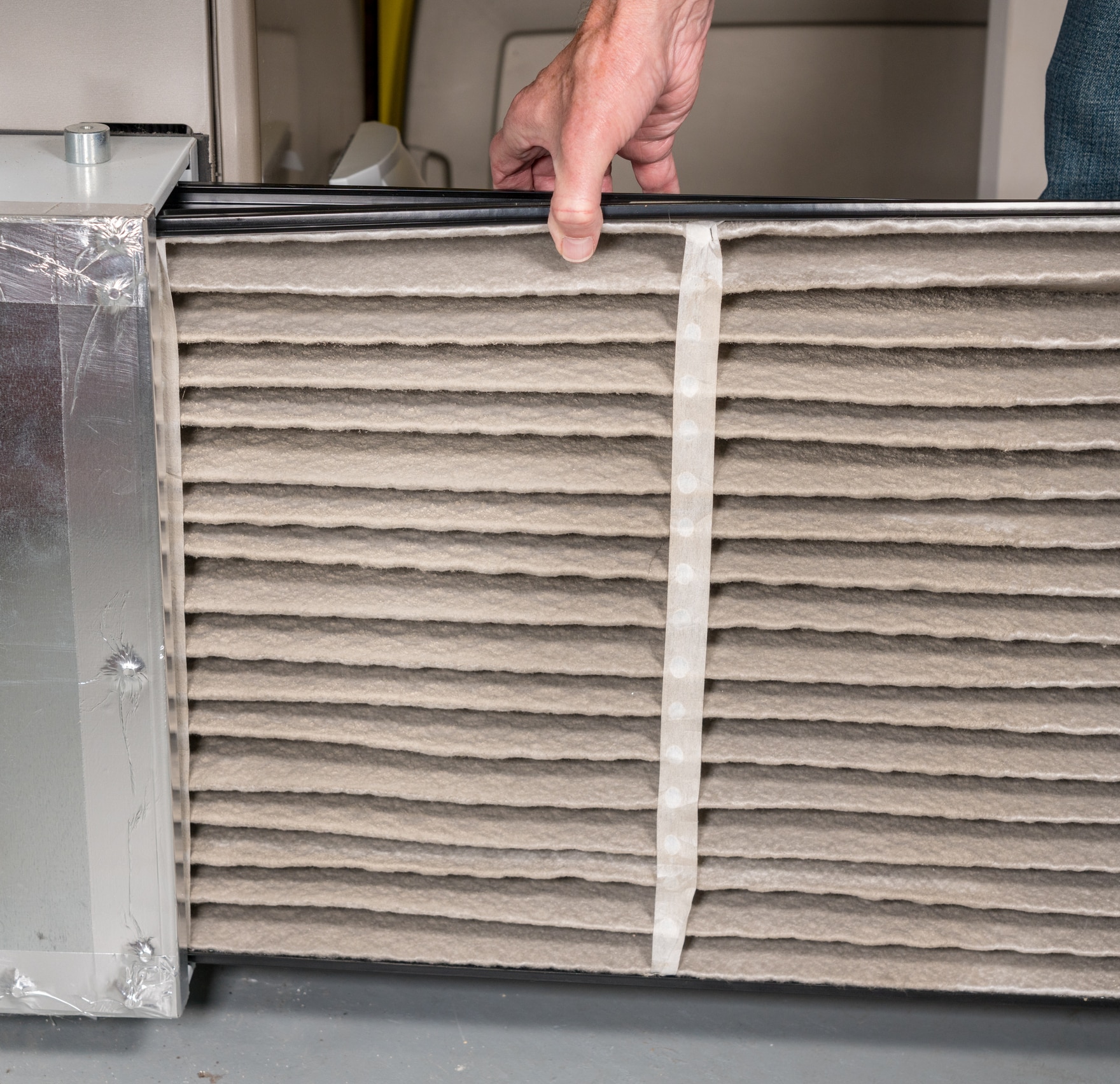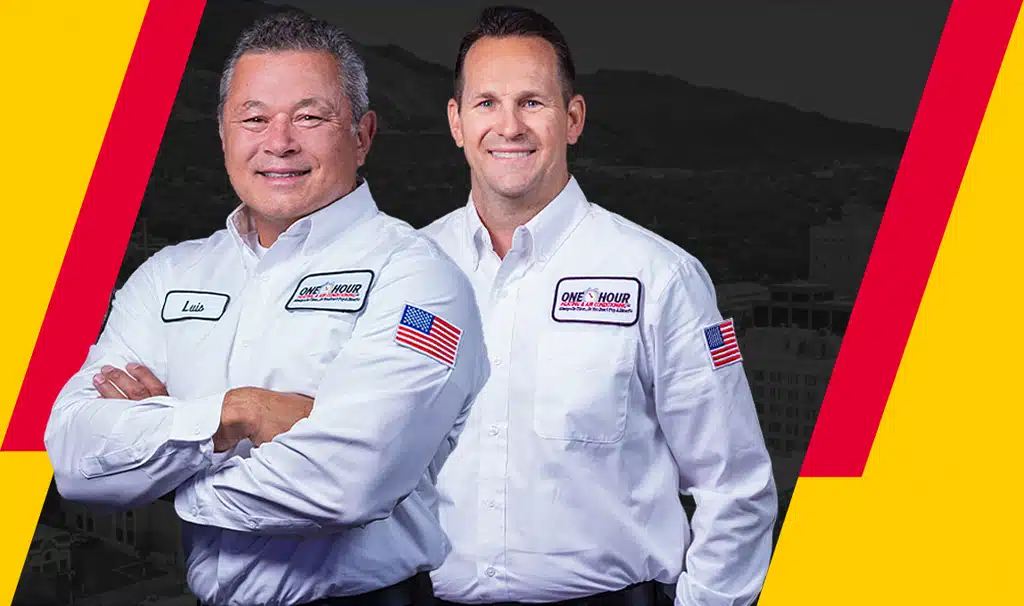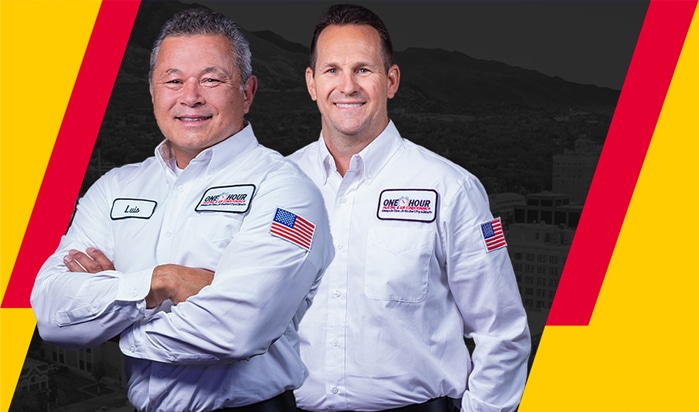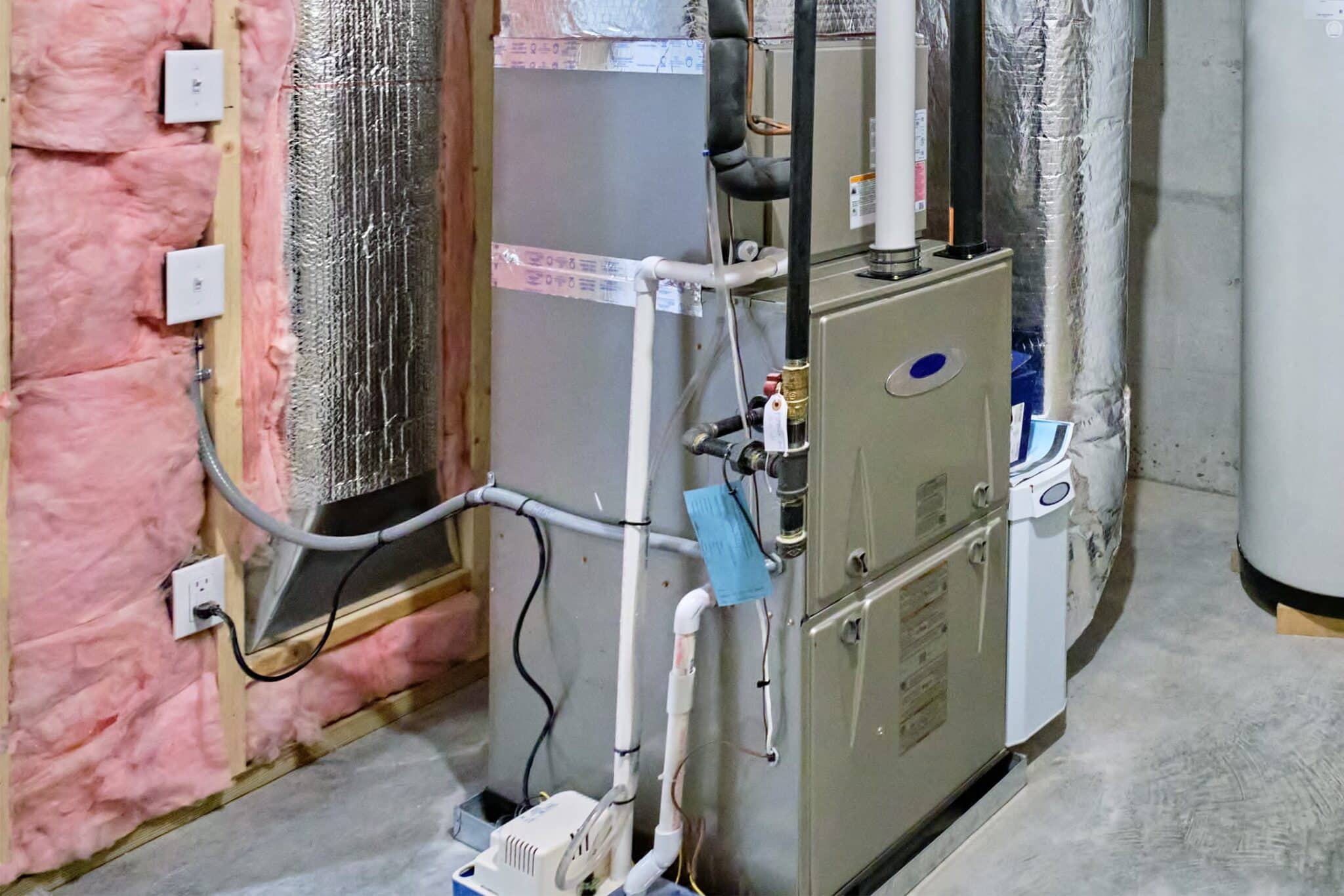As temperatures dip this October in Ogden, UT, a well-functioning furnace is crucial for a cozy home. But why isn’t your furnace heating properly when you need it most? Issues like clogged filters, thermostat errors, or ignition failures often lurk behind that chill in the air. Knowing these common problems can help you take swift action to keep your home warm and safe.
Common Causes of Furnace Issues
When your furnace isn’t heating properly, it’s often due to a few common culprits that disrupt its performance. Understanding these issues can help you take the right steps to restore warmth to your home. Here are some typical reasons why your furnace might be failing to do its job:
-
Dirty or Clogged Filters
One of the most common reasons for heating issues is dirty or clogged filters. Over time, these filters accumulate dust, debris, and allergens, restricting airflow and making your system work harder than it should. This reduced airflow not only lowers efficiency but can also cause the system to overheat, triggering safety shut-offs. Regularly replacing your filters is a simple yet effective way to keep your heating system running smoothly.
-
Thermostat Malfunctions
Your thermostat serves as the command center for your furnace. If it’s not set correctly, malfunctioning, or has low batteries, it can miscommunicate with your heating system, leading to uneven heating or no heat at all. Calibrating or upgrading your thermostat can often resolve these issues and ensure your home maintains the desired temperature.
-
Pilot Light or Ignition Problems
A malfunctioning pilot light or ignition system can leave your furnace unable to heat. Whether it’s a blown-out pilot light or an ignition switch failure, these issues disrupt the entire heating process. Regular maintenance and timely repairs can help keep these vital components functioning, preventing unexpected heating interruptions.
-
Blower Motor Failures
The blower motor is responsible for pushing warm air through your home’s vents. When it fails, your furnace might produce heat, but it won’t circulate properly. Signs of a failing blower motor include strange noises, reduced airflow, or no airflow at all. Addressing these symptoms early can prevent a complete breakdown.
By recognizing these common furnace issues, you can take proactive steps to address them before the temperatures drop further, ensuring your home remains comfortable and safe.

Dirty or Clogged Filters
Dirty or clogged filters are one of the most overlooked but impactful issues that can cause your furnace to underperform. When filters become clogged with dust, pet hair, and debris, they restrict airflow, forcing your system to work harder to circulate warm air throughout your home. This restricted airflow often leads to overheating and triggers safety shut-offs. Over time, the added strain not only reduces overall efficiency but also shortens the lifespan of key components, leading to increased repair costs and higher energy bills.
Dirty filters also affect your indoor air quality. As the furnace struggles to pull in clean air, allergens and particles can circulate back into your living space, leading to poor air quality and potential health issues, especially for those with allergies or asthma. This simple issue can snowball into a bigger problem if not addressed promptly.
How Often Should You Change Your Furnace Filter
Regular maintenance of your furnace filter is essential to avoid common heating problems. Most experts recommend checking the filter every month, especially during peak usage seasons like winter. Generally, filters should be replaced every 1 to 3 months, depending on the filter type, presence of pets, and overall air quality. Homes with pets or high dust levels may require more frequent filter changes to keep the system running optimally.
Investing a few minutes to inspect and replace the filter can greatly enhance your system’s performance. This simple task not only helps your furnace operate more efficiently but also contributes to a healthier home environment. Don’t let a dirty filter compromise your comfort and warmth this winter.
Thermostat Malfunctions
Your thermostat is the brain behind your furnace, controlling when it turns on and how much heat it should produce. However, when the thermostat malfunctions, it can throw the entire heating system off balance. A misreading thermostat can cause frequent cycling, blowing cold air, or failing to heat altogether. Even minor issues like incorrect settings or dead batteries can disrupt performance, leaving your home uncomfortably cold.
One common issue is having the thermostat set to the wrong mode. If it’s accidentally switched to “cool” instead of “heat,” your furnace won’t engage at all. Additionally, incorrect temperature settings or programming errors can result in inconsistent heating or excessive energy use. Another frequent problem is a location error—if your thermostat is placed near a heat source, draft, or direct sunlight, it may misread the room’s actual temperature, causing your furnace to work unnecessarily or not enough.
How to Troubleshoot Basic Thermostat Issues
Start with the basics: check the thermostat’s batteries and replace them if necessary. Next, ensure it’s set to the correct mode and temperature. If the display seems unresponsive or erratic, resetting the thermostat according to the manufacturer’s instructions can often solve the problem. For programmable models, review the schedule to ensure it matches your desired heating needs. If your thermostat still isn’t functioning properly, consider cleaning the unit gently to remove dust or debris that might interfere with its sensors.
If these steps don’t resolve the issue, your thermostat may need recalibration or replacement. Investing time in these simple checks can save you from cold nights and costly repairs, keeping your furnace running smoothly and your home comfortably warm.
Pilot Light or Ignition Problems
The pilot light or electronic ignition is the heart of your heating system, responsible for igniting the burners that produce the heat circulating throughout your home. Without a properly functioning ignition system, warmth simply can’t be generated. Older units rely on a standing pilot light—a small flame that burns continuously to ignite the burners. In contrast, modern systems use electronic ignitions, which are more energy-efficient but can still encounter issues. When these ignition components malfunction, your furnace may blow cold air, struggle to start, or fail to heat altogether.
Common Pilot Light Issues
If your furnace uses a standing pilot light, a common issue is the flame going out due to drafts, a dirty or clogged pilot orifice, or a faulty thermocouple—a safety device that shuts off the gas if the pilot light goes out.
A weak or flickering pilot light often indicates dirt buildup or a lack of sufficient gas flow, preventing your furnace from heating properly. Relighting the pilot may solve the problem temporarily, but persistent issues usually signal the need for professional cleaning or repair.
Electronic Ignition Problems
For furnaces with electronic ignition, problems often stem from worn-out ignition components, like the hot surface igniter or intermittent pilot, which fail to light the burners reliably.
Electrical issues, such as faulty wiring, corrosion, or short circuits, can also disrupt the ignition sequence, preventing your furnace from starting. These ignition components are sensitive and can wear out over time, leading to frequent ignition failures and inconsistent heating.
Troubleshooting Ignition Problems
Begin by inspecting the pilot light or ignition system—if the pilot light is out, follow your furnace’s manual instructions to safely relight it. Ensure the flame is strong and blue, not yellow or flickering.
For electronic ignition systems, listen for clicking sounds that indicate ignition attempts, and check for error codes on your furnace display. If you suspect a dirty pilot or faulty ignition part, it’s best to contact a professional technician to clean or replace the components safely.
Addressing pilot light and ignition issues quickly is crucial to keeping your furnace running reliably. Ignition problems are not only frustrating but can also pose safety risks if left unchecked. Regular maintenance and prompt repairs can ensure your furnace lights up when you need it most, keeping your home warm and cozy all season long.
Blower Motor Failures
The blower motor is a crucial component responsible for circulating warm air throughout your home. It drives the fan that pushes heated air through the ducts and out of your vents, ensuring consistent and comfortable temperatures in every room.
Without a functioning blower motor, your furnace can’t effectively distribute the heat it generates, leaving you cold no matter how high you set the thermostat. When the blower motor starts to fail, it can disrupt the entire heating operation, often catching you off guard.
Signs of Blower Motor Failure
One of the first signs of blower motor trouble is reduced airflow. If you notice weak air coming from the vents, it’s a clear indication that the motor is struggling. Unusual noises, such as grinding, squealing, or rattling, also suggest the motor’s bearings or internal components are wearing out.
Another warning sign is frequent overheating, which can trigger your furnace’s safety switches and cause the system to shut down unexpectedly.
What to Do When Your Blower Motor Fails
If your furnace cycles on and off rapidly or fails to blow warm air, it’s time to inspect the blower motor. Dust and debris buildup can hinder performance, so start by checking the motor’s cleanliness.
However, complex issues like worn bearings or electrical failures often require professional attention. Addressing blower motor problems quickly can prevent complete system failure, ensuring your furnace continues to deliver the warmth you rely on.
Blocked or Leaking Ductwork
Your ductwork is the lifeline of your heating system, responsible for delivering warm air from your furnace to every corner of your home. However, when ducts are blocked or leaking, the efficiency of this system is severely compromised, leading to uneven heating or a complete lack of warmth in certain areas.
Blocked or leaking ductwork forces your furnace to work harder, wasting energy and driving up your utility bills, all while failing to keep your home comfortably heated.
How Blockages Impact Heating
Blockages in the ductwork, caused by debris, dust buildup, or even pests, restrict airflow, reducing the amount of warm air that reaches your rooms. This not only makes your home feel colder but also puts undue strain on your furnace, increasing the risk of system failures. If some rooms are warm while others are chilly, blockages are often the culprit.
The Hidden Dangers of Leaking Ducts
Leaking ducts are equally problematic, allowing heated air to escape into unused spaces like attics or crawlspaces instead of reaching your living areas. These leaks can result in up to 30% of your heated air being lost before it ever reaches your vents. The result is a furnace that runs longer and harder, yet still leaves you shivering.

What You Can Do
Regular inspections and sealing of ductwork can prevent these issues, ensuring your furnace operates at peak efficiency and keeps your home evenly heated. If you suspect blocked or leaking ducts, consulting a professional for a thorough assessment can save you from discomfort and high energy costs.
Overheating and Safety Switch Tripping
Overheating is a critical safety issue that can cause your furnace to shut down unexpectedly, leaving your home without heat when you need it most. Furnaces are equipped with safety switches that automatically turn off the system when it gets too hot, preventing damage and potential fire hazards.
However, frequent overheating and safety switch tripping are red flags indicating deeper problems that should not be ignored.
Common Causes of Overheating
Restricted airflow is a leading cause of furnace overheating. When filters are dirty, vents are blocked, or registers are closed, your system struggles to push warm air through, causing it to overheat. This heat buildup forces the safety switch to shut down the furnace to protect it from further damage.
Other potential causes include malfunctioning blower motors, dust-clogged burners, and faulty heat exchangers, all of which can contribute to overheating and inefficient operation.
The Importance of Addressing Overheating
If your furnace repeatedly shuts off due to overheating, it’s more than just an inconvenience—it’s a sign that something serious is wrong. Ignoring the problem can lead to increased energy bills, costly repairs, and even permanent damage to your heating system.
Regular maintenance, such as replacing filters, clearing vents, and inspecting key components, can help prevent overheating, ensuring your furnace operates safely and reliably.
Professional Inspection and Maintenance
Routine professional inspections and maintenance are not just optional—they’re essential for the safety, efficiency, and longevity of your furnace. Over time, dust, debris, and wear can silently sabotage your heating system, reducing its performance and increasing the risk of sudden breakdowns.
Regular maintenance helps catch small issues before they turn into expensive repairs, ensuring your furnace runs smoothly when you need it most.
Why Choose Professional Maintenance
A professional inspection does more than just a quick glance. Experts dive deep into your system, cleaning vital components, checking for leaks, testing safety controls, and optimizing settings to keep your furnace operating at its best.
This attention to detail not only maximizes your system’s efficiency but also extends its lifespan, saving you money on energy bills and preventing inconvenient failures during the cold season.
Trust One Hour Heating & Air Conditioning of Ogden, UT
At One Hour Heating & Air Conditioning of Ogden, UT, our certified technicians provide thorough inspections and expert maintenance tailored to your system’s needs. We go beyond routine checks to ensure your furnace is reliable, safe, and ready to deliver comfort all winter long.
Don’t leave your comfort to chance—contact us today to schedule your professional inspection and experience the difference expert care can make for your home.
Contact Us Today
Prevent problems before they start—keep your home warm and safe with expert care. Contact One Hour Heating & Air Conditioning of Ogden, UT, today to schedule your service. Trust us to keep your furnace running smoothly!
FAQ Section
-
What should I do if my furnace is blowing cold air?
If your furnace is blowing cold air, check the thermostat settings first to ensure it’s in “heat” mode. Next, inspect the air filter; a clogged filter can restrict airflow, causing the system to malfunction. If these quick fixes don’t work, there may be an issue with the ignition or pilot light, and it’s best to call a professional.
-
How often should I change my furnace filter?
Changing your furnace filter every 1 to 3 months is recommended, depending on the type of filter and household conditions. Homes with pets or high dust levels may require more frequent changes to maintain optimal airflow and system efficiency.
-
Can I fix furnace problems myself, or do I need a professional?
While basic maintenance like filter changes can be done yourself, more complex issues should be left to professionals. Attempting DIY repairs on your furnace can be risky and may lead to further damage or safety hazards.
-
Why does my furnace keep turning on and off?
Frequent cycling could be due to a dirty filter, thermostat issues, or an oversized furnace. Address the filter first, but if the problem persists, a professional inspection is recommended.
-
How do I know if my thermostat is working correctly?
Check that your thermostat is set correctly and that the batteries are functioning. If it seems unresponsive or inaccurate, it may need recalibration or replacement by a professional.





